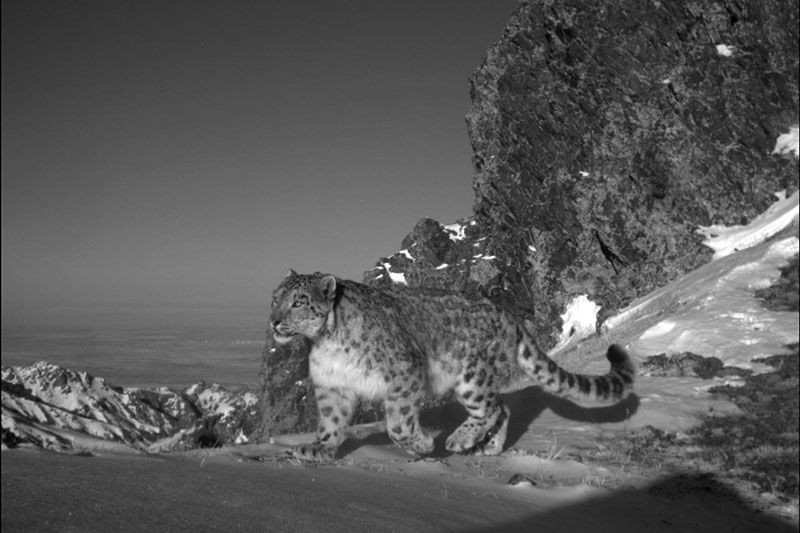Mapping ghosts: counting snow leopards in Mongolia
Guesstimates in snow leopard distribution
An unprecedented study has just been carried out to understand the distribution of snow leopards in Mongolia. It was led by Mongolian scientists and conservationists, including PTES Conservation Partner Bayara, and supported by several international experts, including the International Snow Leopard Trust.
There are thought to be between just 3,500 – 7,000 snow leopards left in the wild, living in 12 countries. Mongolia’s home to the second-largest population after China. However, reliable snow leopard estimates are difficult to come by and most are, at best, guesstimates. Detailed camera trap studies have only been able to cover a small percentage of the total country area. Expert opinions are also used but they involve making assumptions and extrapolating up. In 2017, the Bishkek Declaration, endorsed by the governments of the 12 snow leopard range countries, expressed serious concerns about the gaps in our knowledge about snow leopard population and distribution.
An impressive study opens doors to new methods
But snow leopards, more than almost any other big cat, are incredibly elusive. They are so difficult to detect that counting individuals has been a challenge that, to date, has not been possible. Now, however, a determined team has carried out a study covering nearly half a million square kilometres. So, for the first time we have an estimate of snow leopard numbers across Mongolia and what is now a reliable method that will be easy to replicate regularly in the future.
The survey was carried out over five months by 12 teams consisting of over 210 field personnel. The teams traversed 19,923 km of transects, of which 6,794 km (roughly the distance from the capital to the western-most border of Genghis Khan’s empire) were covered on foot. A staggering undertaking. The study highlights possible biases in previous maps of snow leopards in Mongolia which were developed using expert opinion and presence-only datasets.
This team has just made it possible to map snow leopards
The team estimated that only 5% of Mongolia’s land has a high probability of being used by snow leopards. Eight per cent has a moderately high chance of being used and 14% a moderately low chance. The most suitable areas for snow leopards are rugged mountain-scapes that are home to high densities of wild goats and sheep – prey for the leopards.
The resulting map will help the government make informed decisions about where to prioritise conservation measures. And it will help them understand what impact and how to prioritize infrastructure development too. The Altai Mountain range and Eastern Soyon Mountain ranges were identified as strongholds of snow leopards, meaning these habitats must be protected at all costs.
Reliable and replicable surveys of species, like this one, are critical for conservation planning and evidence-based policy decision-making. Bayara’s team has set a great precedent for future surveys which, in turn, will help protect our remaining snow leopards more effectively. Mapping these cats seemed like an impossible goal, but this team has just made it possible and the study marks one of the first major achievements of the ambitious initiative, Population Assessment of the World’s Snow Leopards (PAWS).
PTES project partner Bayara is delighted. She explains, “This survey provides valuable insights into how the snow leopard is distributed across the country.”
Thank you for helping us fund this vital research to map snow leopards in Mongolia.
If you’d like to support this project please donate or set up a direct debit today.



